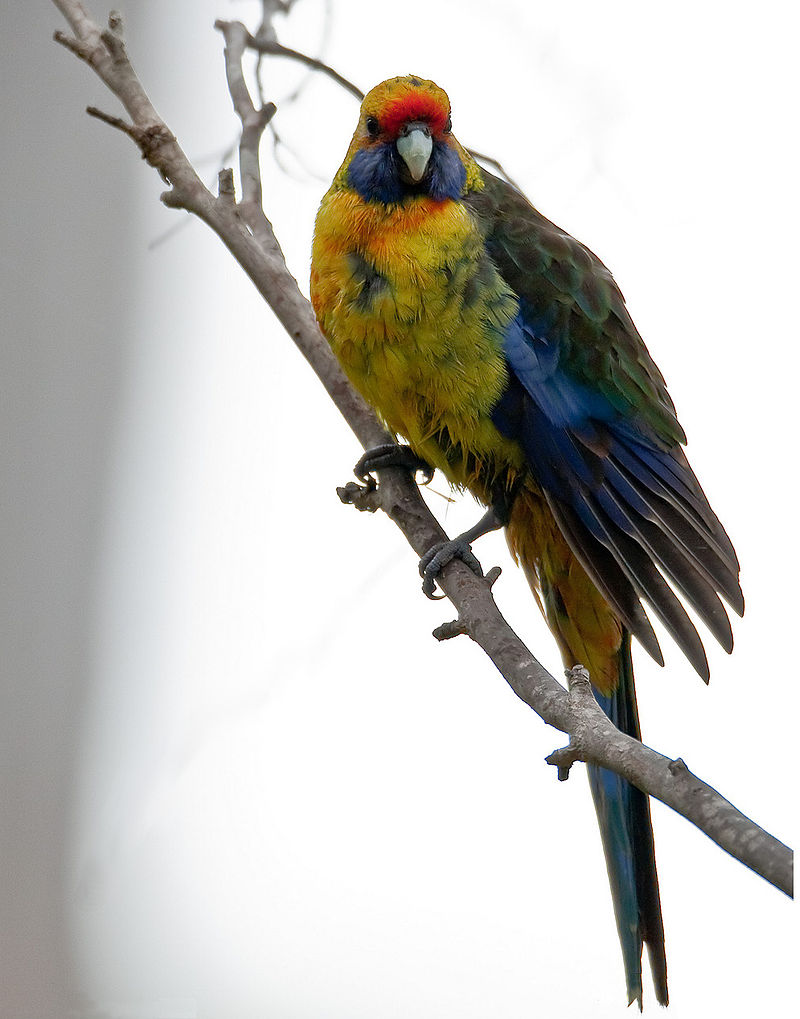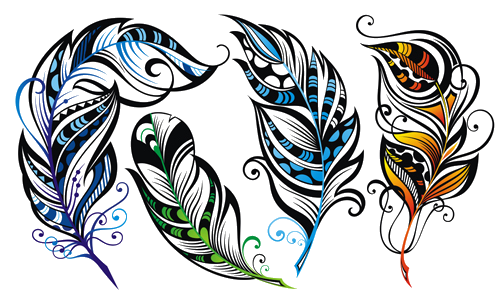Green Rosella - Platycercus Caledonicus - Least Concern
The green rosella or Tasmanian rosella (Platycercus caledonicus) is a species of parrot native to Tasmania and Bass Strait islands. It was described by the German naturalist Johann Friedrich Gmelin in 1788, and named on the mistaken assumption it came from New Caledonia. At 37 cm (14.5 in) long it is the largest species of the rosella genus, Platycercus. Two subspecies are recognized. The green rosella's underparts, neck and head are yellow, with a red band above the beak and violet-blue cheeks. The back is mostly black and green, and its long tail blue and green. The sexes have similar plumage, except the female has duller yellow plumage and more prominent red markings, as well as a smaller beak. Juvenile and immature birds have predominantly green plumage.
Found in a wide range of habitats with some form of tree cover, the green rosella is predominantly herbivorous, consuming seeds, berries, nuts and fruit, as well as flowers, but may also eat insect larvae and insects such as psyllids. Nesting takes place in tree hollows. Common and widespread across Tasmania, the green rosella is rated as least concern on the International Union for Conservation of Nature (IUCN)'s Red List of Endangered species. The King Island subspecies has been classed as vulnerable as its population has declined after much of its habitat on King Island was cleared.
Description: The green rosella is the largest member of the rosella genus.[18] Measuring from 29 to 36 cm (11 to 14 in) in length, an adult has long narrow wings with a wingspan of 44–54 cm (17–21 in), and a long tail with twelve feathers, the central two of which are wider. The adult male is heavier, averaging around 150 g (5.3 oz) to the female's 120 g (4.2 oz), and has a larger bill.
The adult green rosella has a yellow head and underparts with blue cheeks and red band on the forehead and upper lores. The yellow feathers of the fore-crown, lower lores, cheeks, chest and thighs can have red markings, while the yellow feathers of the sides and rear of the head and neck, and the underparts have dark brown bases. The edges of the feathers on the underparts can be pale brown, resulting in a faint scalloping, which disappears with wear. Some of the yellow feathers of the nape have white bases and when worn, the bird can have a whitish patch on their nape. The yellow of the back of the head merges indistinctly into the dark plumage of the hind-neck, mantle and back, which is black or dark brown with green margins. The feathers of the shoulders are blackish with yellow tips. These margins and tips are often worn by the finish of breeding season, leaving the plumage more solid black. The blue-violet feathers of the chin, throat and cheeks have brown-black bases. The blackish plumage of the back extends to the rump, and the long tail is dark green with brown shafts and dark blue outer feathers and tips. The wings are mostly black and green, with violet-blue marginal coverts, primary coverts, and alula, and blue-tinted dark brown primaries and outer secondaries. Underneath the feathers of the wings are dark brown with blue-violet tips. The iris is brown with a dark grey orbital ring, and the bill is pale-grey, with a dark grey cere. The legs are grey. The yellow plumage of the female is duller and more likely marked with red than that of the male, and the green edges to the black plumage of the upperparts are more prominent.
Young birds leaving the nest have juvenile plumage in their first year of life. Juveniles have a dark green head and neck, upperparts and underparts. The feathers all have dark brown bases. The wings are predominantly dark brown and black with a blue sheen. The wings and tail are shorter than those of adult birds. The bill may have a buff sheen. They have an under-wing stripe, which is not present in the adults. Moulting generally takes place between January and April for birds of all ages. Juvenile birds then adopt immature plumage, which is similar but with patches of yellow feathers on the underparts of adult plumage as well as some adult-coloured wing feathers. Some green juvenile feathers remain until the bird is in its second year of age, though are very worn by this time.

Psittaciformes, The Parrot Index, a part of Phoenix Feathers © 2016 - 2023
Page last updated: 12/24/23
Phoenix Feathers

